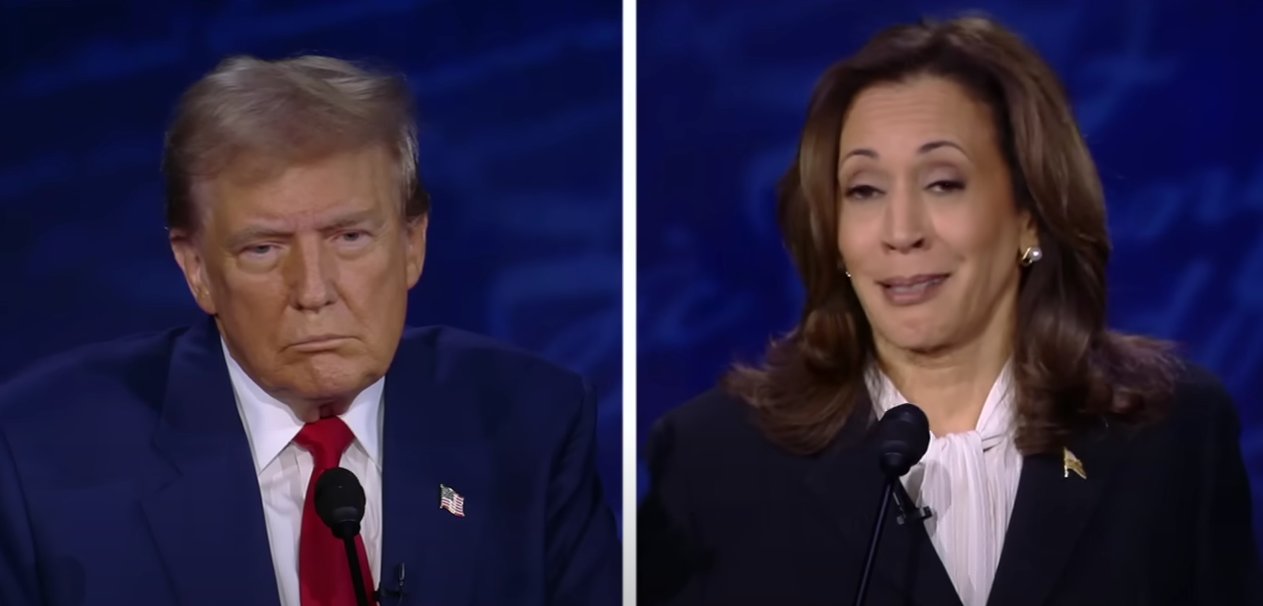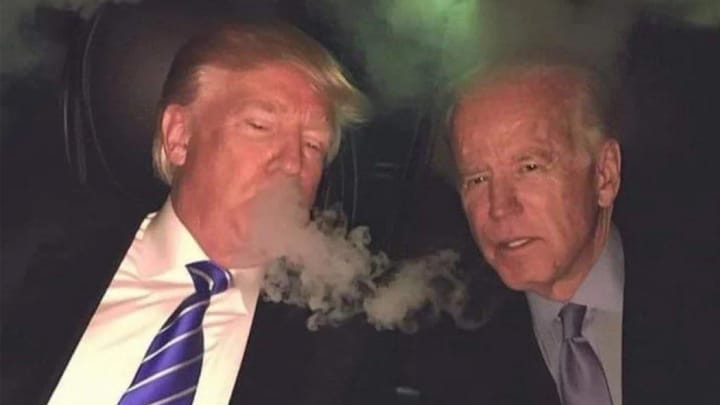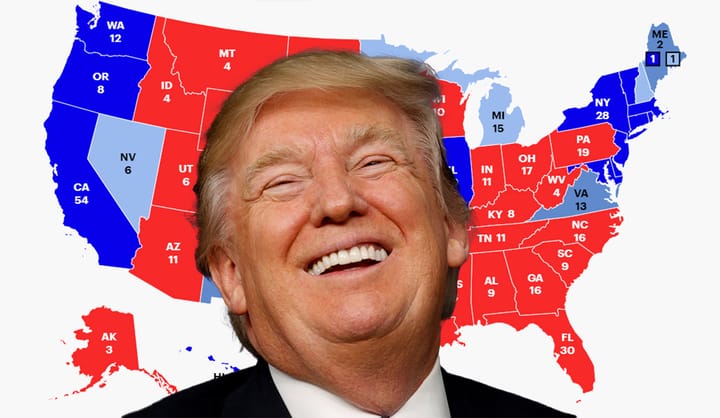A Tight Race: Deciphering the Narrow Polls in the 2024 Presidential Election
In the 2024 election, tight polling between Harris and Trump reflects deep national divides. With both sides energized, each vote matters, as the media’s “tight race” narrative keeps the stakes high and suspenseful.

With the 2024 presidential election just around the corner, political analysts and news outlets are echoing the same message: “The polls are so close and it continues to be a tight race.” It’s a phrase we’re hearing everywhere, and it’s designed to grab our attention and emphasize the uncertainty of what could happen in this showdown between Kamala Harris and Donald Trump. But what does it really mean when we say the race is “close”? Why are we hearing this talking point on repeat, and what does it tell us about how the race might unfold next Tuesday?
The Reality of a “Narrow” Poll in Today’s Political Climate
When experts talk about a close race, they’re talking about a tight gap in polling numbers—sometimes just a percentage point or two separating the candidates, and in this race it has even been as high as three or three and a half. For example, if Harris is polling at 49% and Trump at 48%, we’re essentially looking at a near tie, especially when you consider the margin of error. A close race often means that each side has significant support, making it challenging to predict who will come out on top.
In the context of 2024, this closeness reflects a deeply polarized nation. Each candidate represents not just different policies but contrasting views on the direction of the country. Harris’s campaign emphasizes progressive issues like climate action, healthcare reform, and social justice, aiming to attract both younger voters and progressives. Trump, meanwhile, is focusing on economic recovery, “law and order” in reference to the southern border, and a return to his version of America First policies. Voters see a clear divide, and many have strong, unshakeable opinions on which vision they support, leaving little room for one candidate to pull decisively ahead.
Why the Media Pushes the " Tight Race” Narrative
The media’s constant emphasis on narrow polling numbers serves multiple purposes. For one, a close race generates suspense. Just as sports fans tune in to a game that’s down to the wire, people pay attention to elections when the outcome feels genuinely uncertain.
But there’s also a practical side to this narrative, too. When polls are close, there’s an underlying message that individual turnout could make the difference, and that message can motivate people to vote, especially those who might feel their vote doesn’t usually matter in a more predictable election.
However, some might say that the “tight race” narrative also serves as a kind of caution. In a year where political opinions are highly charged and misinformation is everywhere, the public should be prepared for any possible outcome. Highlighting a close race can reduce the shock of an unexpected result and makes it clear that either candidate could win. It’s a way to help the public accept the possibility of a narrow, potentially contested victory. Though, this last point might not play out this election cycle. Both sides of the voting bloc are just days away from seeing their candidate bound for 1600 Pennsylvania Avenue in January.
The Psychological Impact of a “Tight Race” on Voters
When people hear that an election is close, it affects how they feel about voting. For some, it’s a motivator. The idea that every vote counts can push people to show up on Election Day, making them feel that they have a chance to shape the outcome. This effect can be especially strong for those who feel like their vote might not matter as much in a predictable race but could be the deciding factor in a close one.
However, this narrative also comes with downsides. Voter fatigue is real, especially after several years of intense political battles. This idea comes at the highest level since Trump entered the political sphere. Some people may feel burned out, causing them to disengage or believe that their single vote won’t make a difference in such a tight race. This can make the difference in turnout between the two parties, especially if one side feels more energized than the other.
The prospect of a close race can also increase the risk of disputes after the election. In a year when both parties have large, passionate bases, a narrow result could lead to post-election controversies, recounts, or even legal challenges. We’ve seen similar situations in past elections, like in 2000 with Bush vs. Gore and even to an extent in 2020. With both sides so evenly matched, a close race could mean Election Day won’t be the end of the story, especially if the final decision hinges on tight margins in key swing states.
Can We Really Predict This Election from Narrow Polls?
The tight polling in this race might hint at a divided electorate, but close polls don’t necessarily predict the final outcome. Recent elections have shown us how polling can be unpredictable. In 2016, most polls pointed to a narrow Clinton victory, but Trump won through key swing states that weren’t fully captured in national polls. In 2020, while Biden was the projected favorite, Trump still outperformed expectations in some areas, leading to closer results in many states.
These surprises remind us that polls are snapshots—they capture public opinion at a specific moment in time but can’t always show how people might shift later in the final weeks or days. Polls depend on samples, meaning they survey a few thousand people to estimate what millions will do. In a tight race, any error or shift in these samples can lead to surprises.
In 2024, key groups like young voters, suburban women, and minority communities could tip the scales. If Harris can energize progressive voters and bring in undecided moderates, she’ll have a strong chance. Trump, on the other hand, will need to rally his base and win back suburban voters who might feel drawn to his economic message but are wary of the character that is Donald Trump.
What’s at Stake in a Close Election in 2024
The “tight race” narrative also points to the deep divisions in this election. Harris and Trump offer two distinct visions for the country, making this election about more than just policies. For Harris supporters, a win could mean stronger action on climate, healthcare, and social issues. For Trump supporters, it could mean a return to his economic and immigration policies, with a focus on restoring what he calls “law and order.”
This is why the race is so difficult to predict and charged with much emotion. Voters see this as a crucial election that will define the future of the country, and the close polling numbers reflect that tension. While some elections hinge on undecided voters or a shift in the center, this election is about rallying each side’s base and encouraging them to turn out in high numbers.
A Close Race, An Important Choice
At its core, the “tight race” polling narrative is a reminder of how sharply divided the U.S. is right now. Harris and Trump offer two unique paths, and the tight numbers show us that voters are almost evenly split. Polls give us an idea of where things stand, but they aren’t perfect and can’t capture last-minute shifts or factors like turnout.
For voters, this closeness should serve as a call to action. Whether you’re supporting Harris, Trump, or another candidate, the power to decide this election lies in the hands of the people. In a race that’s truly “so close,” every vote has the potential to change the outcome. So, stay informed, make your choice, and don’t let the polls decide for you.





Comments ()